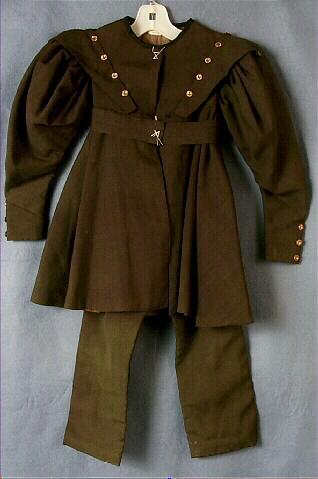
Figure 1.--This brown tunic suit was worn by American boy Octavius Eastman (1833-1837) when he was 4 years old. Presumably it was what he wore after breeching. Source: Wisconsin Historical Museum. |

|
HBC relies very heavily on photography and as a result we have only limited information in the early-19th century before the invention of photography (1839). Thus vintage clothing is an important source of information. Here we have a dark brown tunic suit. Brown appears to have been a popular color for boys and we also see girls wearing brown dresses. The tunic suit was done in heavy wool. The garment was hand-sewn, there was not yet ready-made clothes available. The tunic top was long, extending to knee length. It has an empire (high) waist with a flared skirt. There are dropped shoulders with full leg-o-mutton baloon caps with crescent shaped sleeves. The jewel neckline is emphasized with black silk. Two capelet-like pieces of material extend from the front waist to back waist at an angle beyond the shoulders. It widens into long split points at the top of each shoulder. It almost look like a "V" sailor front, but this was before sailor styling was popular. There is also a 3" wide fabric belt, a self-belt done in the same fabric as the tunic and extends all the way around. There are shiny brass buttons along the front edge of capelet pieces. This provides the suit with a military appearance, a popular look for boys. There are 24 brass buttons with 3 extra on each sleeve and two on the front of the self-belt. The three button sleeve decoration is interesting. Thst would become the convention for boys and men's suit jackets. The tunic is lined in light brown cotton.
The center front of the tunic and the belt use hooks and eyes as closing devices.
The tunic comes with I think matching long pants, although the color looks a little different. Early tunic suits did not always have matching tunics and pants.
Like the tunic, they are also lined in brown cotton and batting. The long pants were done to ankle length. Tunics in the early 19th century were popular before shortened-length pants for boys appeared.
A 4" wide cotton waistband runs to chest level. The pants are pleated into the waistband. The back seam is left open halfway down seat. It closes at the waistband with two ivory bone buttons.
As this item was donated to the Wisonsin Historical Museum, we even know who wore it. The boy was Octavius Eastman (1833-1837) of Landaff, New Hampshire, now known as Landaff Center. Octavius was born March 2, 1833 in Landaff. His father was Samuel Eastman (1789-1858) and Mary Pell (1796-1860). They married on May 11, 1831. Octavius died on March 27, 1837. The Eastman family several years later moved to Spring Prairie, Wisconsin (1844). They took Octavius' tunic suit with them. We suspect they traveled via the Erie Canal.
Navigate the Boys' Historical Clothing Web Site:
[Return to ther Main vintage tunic page]
[Return to ther Main reenactors page]
[Return to ther Main tunic page]
[Return to ther Color in American clothing]
[Return to ther Main 1830s individual biographies]
[Introduction]
[Activities]
[Biographies]
[Chronology]
[Clothing styles]
[Countries]
[Topics]
[Bibliographies]
[Contributions]
[FAQs]
[Glossaries]
[Images]
[Links]
[Registration]
[Tools]
[Boys' Clothing Home]